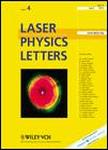版权所有:内蒙古大学图书馆 技术提供:维普资讯• 智图
内蒙古自治区呼和浩特市赛罕区大学西街235号 邮编: 010021
T=题名(书名、题名),A=作者(责任者),K=主题词,P=出版物名称,PU=出版社名称,O=机构(作者单位、学位授予单位、专利申请人),L=中图分类号,C=学科分类号,U=全部字段,Y=年(出版发行年、学位年度、标准发布年)
AND代表“并且”;OR代表“或者”;NOT代表“不包含”;(注意必须大写,运算符两边需空一格)
范例一:(K=图书馆学 OR K=情报学) AND A=范并思 AND Y=1982-2016
范例二:P=计算机应用与软件 AND (U=C++ OR U=Basic) NOT K=Visual AND Y=2011-2016



The direct simulation Monte Carlo (DSMC) is a widely used approach for studying aerodynamics effects of rarefied flows, but it is highly time-consuming and may exhibit statistical fluctuations. In this study, we propose an efficient aerodynamic prediction method based on convolutional neural networks (CNNs) to further explore the application of deep learning in improving the efficiency of DSMC for calculating the aerodynamics of rarefied flows. The method includes centroid aerodynamics forces prediction (CFP) and surface aerodynamic forces distribution prediction (SFP), both of which are trained using a dataset of free molecular flow around obstacles derived from DSMC simulations. The SFP is designed to bridge the gap between flow field and surface forces, with two characteristics extraction methods developed specifically for this purpose. Additionally, two data preprocessing methods are designed to suppress the statistical noise inherent in DSMC simulations. Both CFP and SFP have demonstrated optimal performance in terms of accuracy and resistance to overfitting, achieving considerable predictive accuracy. The SFP exhibits a significant speedup, enabling real-time prediction of aerodynamic distributions from flow field. The results demonstrate that the proposed CNN-based approach offers a promising solution for the efficient calculation of aerodynamic forces in rarefied flows, and provide a robust foundation for ongoing development.





Ignition performance and reliability of the hollow cathode are critical for electric propulsion systems. A state-of-the-art dual trigger electrode hollow cathode with fast ignition and resistance to poisoning has achieved over 700 d of space applications and hundreds of on-orbit ignitions. To evaluate and optimize the ignition reliability behind the improved ignition performance, parametric analyses of different dual trigger circuits and inner electrode dimensions are conducted using a coupled plasma-thermal model. The dual trigger circuit connects the inner electrode and the keeper in parallel to the ignition power supply, and switches the discharge electrode through a current-limiting resistor on the inner electrode branch. Insufficient current-limiting resistance saturates the inner electrode current, causing the keeper ignition failure, intensified evaporative depletion and sputtering erosion of the emitter through weakened electric field work in the keeper gap, enhanced electron power deposition, and hysteresis drop in emitter sheath potential during plasma diffusion. The insertion of the inner electrode into the emitter cavity overlaps the localized strong electric field at the inner electrode tip with the emission energy injection zone to accelerate the inner electrode ignition, but excessive extension shortens the ion sputtering scan path and exacerbates concentrated erosion downstream. The thin inner electrode attenuates the conductive heat dissipation leading to thermal fatigue or melting of the inner electrode, while the thick inner electrode promotes initial ionization collisions through the narrow electrode gap, resulting in localized intense sputtering erosion of the emitter near the inner electrode tip. simulations conservatively estimate that the dual trigger electrode hollow cathode is capable of 100 000 h lifetime and 37 500 ignitions. The optimized design for ignition reliability suggests a current-limiting resistance higher than the ratio of i
电话和邮箱必须正确填写,我们会与您联系确认。
版权所有:内蒙古大学图书馆 技术提供:维普资讯• 智图
内蒙古自治区呼和浩特市赛罕区大学西街235号 邮编: 010021

暂无评论